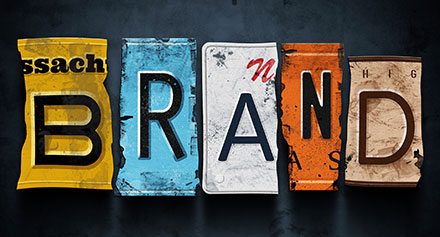Use Your Brand to Train Your Team
A seasoned learning and development strategist shares how to create strong brand advocates within your organization.

At 5 by 5 Design we believe it’s possible to change the world by posing the right questions, listening to the honest answers, and following the path that emerges from the dialogue. Today’s discussion focuses on the importance of making sure your team knows and lives your brand.
Dawn Thompson is a strategic senior leader with over 20 years of expertise in human resources, talent management, and learning and development. She specializes in building strong partnerships with business stakeholders to drive cultural transformation and operational excellence across diverse organizations. We’ve asked Dawn a series of questions about team brand training. Here’s what she had to say.
1. Why is it important to consider your brand when training your team members?
Your brand is more than your logo or the ads you put online. It’s a living, breathing commitment you are making to your customers. This requires your team members to represent your brand. When training aligns with the brand, it helps teams internalize the values, voice, and purpose of the organization. It empowers them to act as brand ambassadors across every touchpoint, building trust and emotional connection with customers and partners.
2. What are some best practices for training teams to be brand advocates?
- Start with the story: Share the brand’s origin, purpose, and impact to create emotional connection.
- Make it personal: Help team members see how their role contributes to the brand’s success.
- Model the behavior: Leaders must consistently live the brand. Their actions speak louder than posters in the breakroom. Ensure that leaders receive the training and feedback to be good examples.
- Encourage social sharing: Train team members on how to authentically talk about the brand on social media. Having social media policies as guardrails for these interactions is also important.
- Celebrate brand wins: Recognize team members who embody brand values. Ensure leaders are looking for wins and have the skills to celebrate them in the best ways. Remember to honor individuals the way they want to be acknowledged—not everyone wants their achievements celebrated publicly.
3. How can you evaluate your brand training and talent development process to determine its effectiveness?
Whether it’s training or talent development, your brand and values should be woven into every layer of the experience. In talent management, your values can serve as key themes for structured feedback, helping team members understand how their behaviors align with the organization’s brand promise. Strive for a healthy balance of positive and constructive feedback and use quarterly feedback sessions as strategic moments to realign around the behaviors you want to reinforce.
When delivering training, intentionally embed branding and values into your content. This can include reinforcing key messages through case studies, discussions, or role-play scenarios grounded in realistic job challenges. Before the session wraps, assess what participants have learned by observing their performance in simulated situations that mirror what they’ll face on the job.
Once team members return to their roles, it’s critical that managers are equipped to reinforce brand-aligned behaviors on the ground. This means actively observing performance, gathering relevant data, and delivering timely, constructive feedback. Remember, the quality of this reinforcement hinges on the manager’s capabilities—so ensure they’re trained and prepared before the broader team is brought into brand training efforts.
If live observation isn’t possible, consider the following feedback sources:
- Pulse surveys and focus groups to gather qualitative insights
- Brand sentiment analysis, both internally and externally, to detect shifts in perception
- Performance metrics such as customer satisfaction, employee engagement, and referral rates—all strong indicators of brand alignment
4. What are some common mistakes you see organizations making when it comes to brand training?
- Failing to connect individual roles to the broader brand mission
This connection should begin during the interview process and be reinforced throughout onboarding. When team members understand the direct impact their role has on delivering the brand promise, engagement and ownership naturally increase. - Treating training as a one-and-done event
Brands are not static and training shouldn’t be either. Learning should be woven into the flow of work, continually refreshed and reinforced through everyday interactions. When team members can apply what they learn right away, the relevance—and retention—skyrocket. - Overloading content—training by firehose
While subject matter experts bring passion and depth, it can sometimes lead to information overload. Avoid drowning learners in jargon or covering every scenario at once. Keep messages clear, concise, and relatable to the day-to-day realities of your audience. - Neglecting full-spectrum support
Brand training doesn’t stop with front-line teams. Leaders need tools to support their team members and measure progress. Without training leadership on how to reinforce the message, the brand experience will feel fragmented and inconsistent. - Assuming alignment rather than measuring it
Completion doesn’t equal comprehension. It’s critical to assess the effectiveness of training through observation, feedback, and performance data. Just because it’s been taught doesn’t mean it’s being lived. Inspect what you expect.
5. What advice do you have for organizations looking to improve their overall brand training and talent development process?
To create brand training that truly resonates, embed your brand into every stage of the employee lifecycle, from the first interview to retirement. Make sure team members don’t just learn about the brand, they experience it, so they can speak and live it with confidence.
Understand how different teams connect with the brand. Tailor training experiences to resonate with their roles, responsibilities, and touchpoints. A one-size-fits-all approach won’t stick.
Design training as an experience, not a lecture. It should be interactive, immersive, and grounded in real-world relevance. “Death by PowerPoint” isn’t just ineffective, it’s forgettable. Memorable brand training creates impact through stories, activities, and genuine engagement.
Leverage cross-departmental champions to help sustain momentum. Give them space to share best practices, propose creative reinforcement ideas, and celebrate wins. This builds shared ownership of the brand across the organization, not just within HR or L&D.
Keep it fresh by continuously updating training materials with real-time brand stories and evolving goals. Refresh the delivery too, experiment with new formats, tools, and approaches to keep the experience alive and relevant.
Spread Your Brand Across Your Business
How to collaborate companywide to build a stronger brand.
Your Brand is More than a Logo
Fix the underlying issues to fix your brand.
Audit Your Brand to Keep it Fresh
Care and maintenance of your brand is critical to keep it relevant to your customers.



